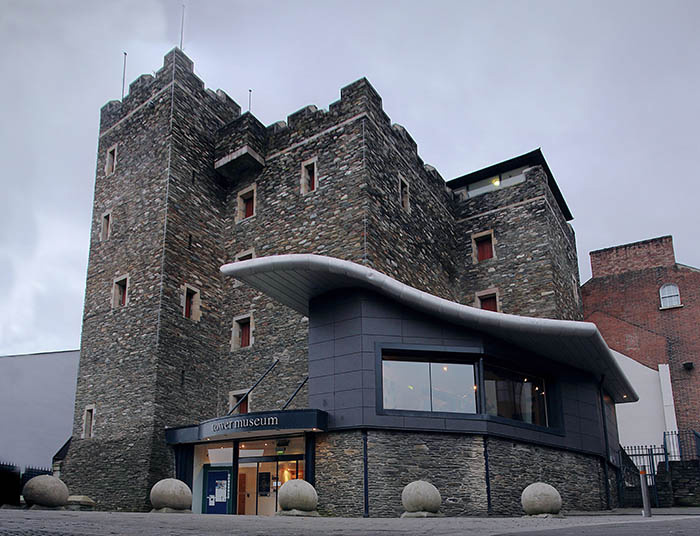 THE Tower Museum will be shining a light on an exciting new collection of glass plate images which provide a fascinating insight into the life of historic Derry.
THE Tower Museum will be shining a light on an exciting new collection of glass plate images which provide a fascinating insight into the life of historic Derry.
The collection, which includes images of daily life in the city and surrounding areas in the 1890’s, was unearthed last year in the basement of the Frist Derry Presbyterian School when they were moving to their current premises.
The plates have now been donated to the Museum archive by Fountain Primary School, and have become known as the Fountain Collection. Since the discovery, the team at the Tower Museum have had the collection digitised and will be launching the series as its first online exhibition.
A special talk focusing on the newly discovered window into 1890’s Derry, will take place at the museum on Tuesday July 3rd, delivered by Alex Mullan and Ronan McConnell from Derry City and Strabane District Council’s Museums and Visitors Services department.
Speaking ahead of the event, Archivist Alex Mullan, said the collection would form an important part of the city’s photographic archive.
“We were absolutely delighted when head teacher at Fountain PS, Cathy Arthur, approached us with the glass plates last August,” he explained.
“On closer examination they revealed a wide range of scenes from the past, including pictures of the city, and surrounding rural areas such as Eglinton.
“The collection is an extremely important find in documenting the city’s story in snapshots of day to day life at that time.
“We will also be revealing more about how the Museum catalogues and preserves collections such as this, including the process of cleaning and the digitisation of the plates.
“Technology now plays an extremely important role in the preservation and recording of artefacts for posterity.”
Photographic plates preceded the more flexible plastic photographic film which was introduced at the end of the 19th Century.
Two types of glass plate negatives exist – the collodion wet plate which was in use from the 1850s, and the silver gelatin dry plate in use from the 1870s.
The wet plates had to be hand coated by photographers, while the later dry plates were easier to transport and didn’t require as much exposure to light.
Anyone who is interested in local history and the role of photography in documenting the past, should come along to the talk at the Museum to find out more about the varied array of images, ranging from people, places, advertisements, sporting events, scenes from Derry and Eglinton and more.
The event on Tuesday, July 3, takes place at 7 pm and is free to attend.
If you would like to book a place, please RSVP by contacting [email protected] or by calling 02871372411.
Tags:




